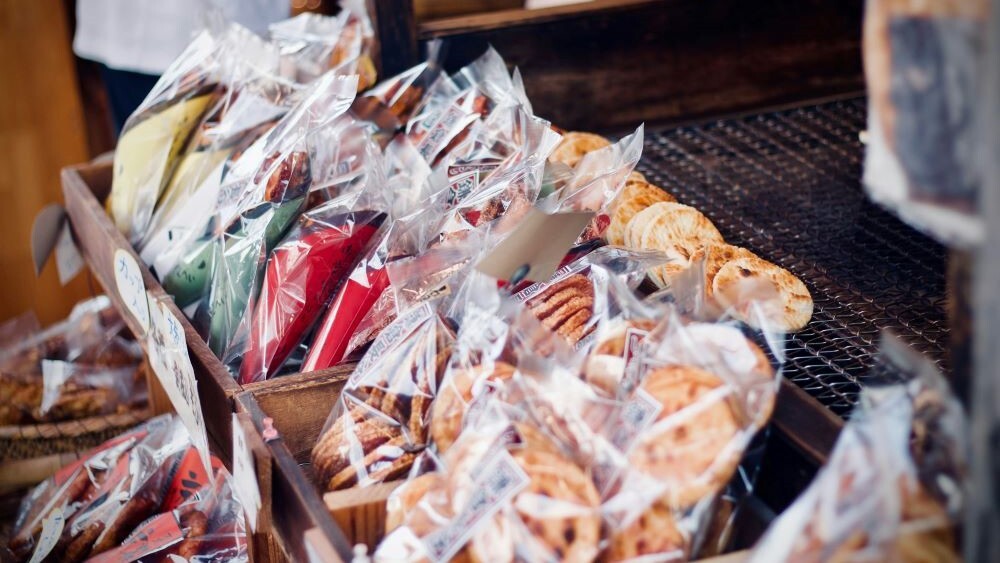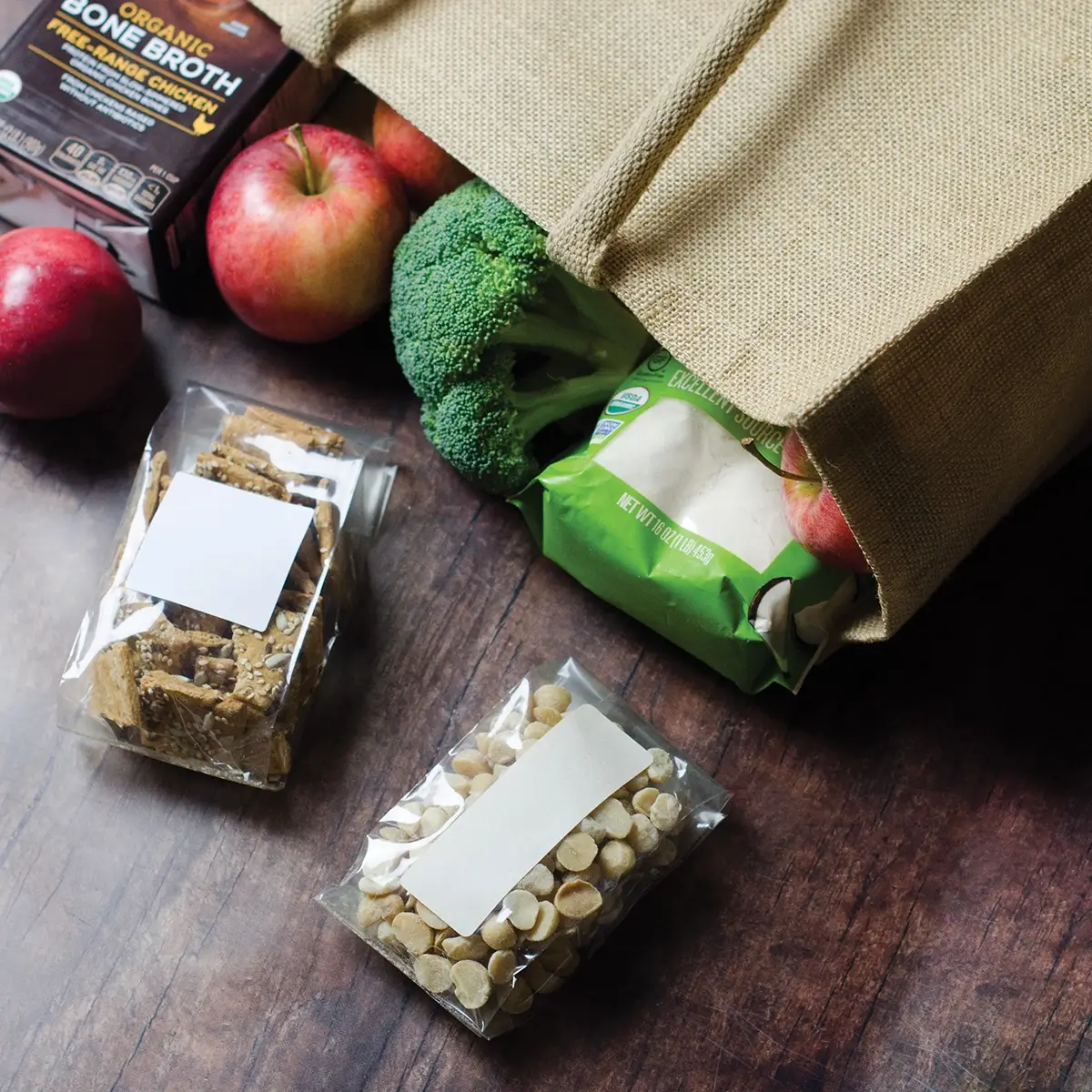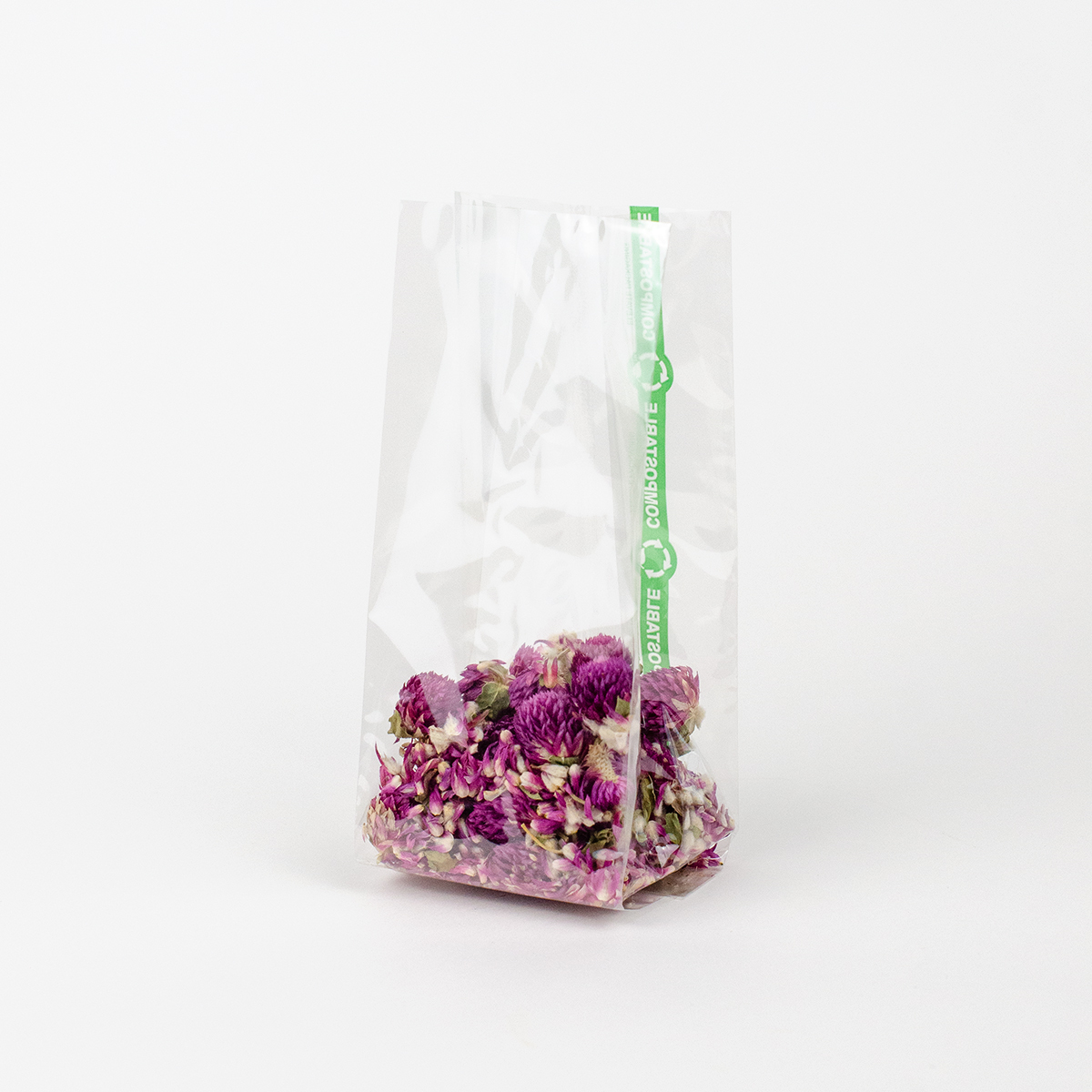Recent Posts
- Home
- Elevate Blog
- Sustainable Packaging Guide - Compostable Cellophane
Sustainable Packaging Guide - Compostable Cellophane
Posted on

Biodegradable and compostable films may seem like new inventions, but in fact some have been around for longer than you might think!
Invented by Swiss chemist Jacques E. Brandenberger in the 1900’s, cellophane was the very first see-through packaging. It was one of the first plastics, and biodegradable! In 1912, Whitman’s candy company popularized the material in the United States by using it to wrap candy.

Before cellophane, self-service retail was not common. Cellophane played a crucial role in developing the self-service model of retail, particularly in the sale of products such as fresh meat and produce. Manufacturers and retailers were able to manipulate the appearance of products by controlling oxygen and moisture levels. Customers were able to see the quality of pre-packaged fresh foods before purchase.
How Cellophane Changed the Way we Shop for Food
What is Cellophane Made From?
Cellophane is plant-based. The “cello” in cellophane stands for cellulose – the primary structural component of plants. Cellulose is what gives plant cell walls their strength and rigidity, and it’s one of the most abundant organic polymers on Earth.
To create cellophane, cellulose is extracted from renewable plant sources like wood, cotton, hemp, or corn. This raw cellulose is then regenerated into a thin, flexible film that looks and behaves much like plastic but is entirely biodegradable.
Because it’s made from plants, cellulose-based cellophane is naturally biodegradable and breaks down into water, carbon dioxide, and organic matter without leaving behind microplastics. To be labeled compostable it must meet specific standards like ASTM D6400, which verify that it breaks down fully and safely in composting environments.
At Elevate Packaging, our compostable cellophane bags are made from FSC-certified wood pulp biofilms that are certified compostable. This means they not only meet strict compostability standards, but also come from responsibly managed forests that support healthy ecosystems and biodiversity.
⚠️ Be aware! In the U.S., "cellophane" has become a genericized term. It's often used to describe any clear, crisp film, even those made from petroleum-based plastics like PVC or polypropylene. These can look similar but they are not compostable. Always check the materials to be sure you're getting genuine cellulose-based film.
If you’re aiming for compostable packaging, there’s one more thing to watch for:
Is Cellophane Biodegradable?
Yes, true cellophane is biodegradable. Made from plant-based cellulose, it naturally breaks down into carbon dioxide, water, and organic matter, leaving no harmful residues behind.
But not all cellophane products are created equal. It is important to be aware of any extra ingredients or coatings that can be added to cellophane. Some real cellulose-based films are coated with additional materials to improve durability, moisture resistance, or sealing properties. Additives like polyethylene or polyvinylidene chloride (PVDC) can make the material stronger but they also prevent it from fully biodegrading.
When cellophane is coated or laminated with non-biodegradable plastics, it loses its compostability and environmental advantages.
If you are looking for truly compostable packaging, be sure to look for packaging that meets standards ASTM D6400 or EN13432, which guarantee the product will break down completely and safely in composting environments.
It's important to note that while true cellophane is biodegradable, not all biodegradable materials are necessarily compostable.

Can Cellophane be Composted?
The short answer: Sometimes.
The long answer: True cellulose-based cellophane is both biodegradable and compostable. It naturally breaks down into non-toxic components like water, carbon dioxide, and organic matter.
However, problems can arise depending on what additives or coatings have been applied to the film.
- Some additives are petroleum-based plastics, which prevent the material from composting.
- Other additives may be biodegradable but not compostable. This means they could break down eventually, but not in a controlled, beneficial way that creates usable compost.
Compostable means that a material can be processed into compost or humus. Biodegradable only means that a substance can be biologically broken down. Packaging listed as biodegradable may not be compostable (but all compostable packaging is biodegradable!)
Still not sure? Find out more: Biodegradable vs Compostable: What’s the Difference?
Certified Compostable Cellophane Bags
At Elevate Packaging, we are committed to sustainability and transparency.
That’s why we refer to our products as compostable, not just biodegradable. Our compostable cellophane bags are made entirely from certified compostable films, sourced responsibly and tested to meet strict composting standards.

Is Cellophane Better Than Plastic?
As the first see-through packaging material, cellophane revolutionized shopping and packaging. It allowed customers to see products clearly while providing a lightweight, flexible protective layer.
By the 1960s cellophane was largely replaced by petroleum-based plastics such as polypropylene. These plastics were cheaper to produce and more durable, but have unfortunately resulted in an incredible amount of plastic waste and microplastics.
Cellophane has had a resurgence of popularity in recent years. Thanks to the hard work of environmental advocates, manufacturers and consumers have begun to understand the dangers of petroleum-based single-use plastics. Cellophane has some properties similar to plastic, but with a big difference: it is plant-based, biodegradable, and compostable.
While cellophane is a better choice than conventional plastics in terms of end-of-life impact, it is not a perfect substitute for plastic in every application. Cellophane is best suited for light-duty, single-use applications. It provides basic protection but is not fully waterproof and is not recyclable.
For packaging to be truly eco-friendly, it’s important to consider the product type, how it will be used, and how the packaging will be disposed of. To learn more about how to choose the right materials for your packaging, check out our guide to sustainable packaging design.
As with any packaging material (yes, even petroleum-based plastics!) it's important to test whether the packaging matches the product’s needs, intended use, and expected lifecycle. Choosing the wrong type of packaging can lead to damaged products, customer dissatisfaction, and unnecessary waste, even when using a sustainable material.
Eco-Friendly Clear Bags
If you're looking for a clear packaging option that’s better for the planet, cellophane bags are a great choice. They’re perfect for packaging dry foods, loose tea, cards, small gifts, apparel, and more. The clear material lets your product shine, helping customers see exactly what they’re buying.
Because cellophane bags are relatively inexpensive, they’re also a great option for smaller businesses that want to align their packaging with their sustainability values.
Compostable Cellophane Bags
At Elevate Packaging, our compostable cellophane bags are made from bioplastic film derived from FSC-certified wood cellulose fibers. These renewable raw materials are sourced using sustainable forestry practices that prioritize healthy ecosystems and biodiversity.
Our compostable cellophane bags:
- Meet FDA requirements for direct food contact
- Are vegan and non-GMO
- Are made with 97% renewable content (ASTM D6866 Carbon Testing)
- Meet compostability standards including ASTM D6400 (U.S.) and EN 13432 (Europe)
Certified compostability means our bags will fully break down within 90 days in commercial composting conditions, without leaving behind harmful residues or microplastics.
We first introduced cellophane bags to our product line to make it easier for businesses to find compostable bags and labels all in one place. Since then, they’ve become one of our most popular and loved products!
Available in a wide range of sizes (with custom bag options also available) our compostable cellophane bags make it simple for brands of all sizes to stay true to their sustainability goals without sacrificing presentation.
Shop Compostable Cellophane Bags
Original Posted on Jun 18th 2020, Updated April 28th 2025
 Loading... Please wait...
Loading... Please wait...




